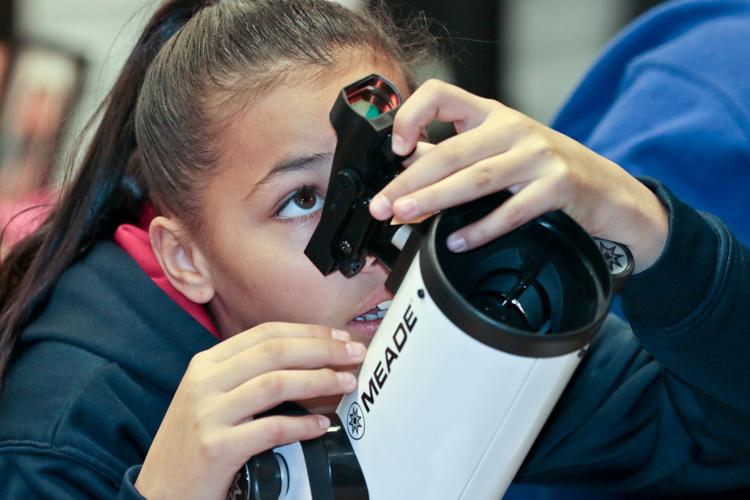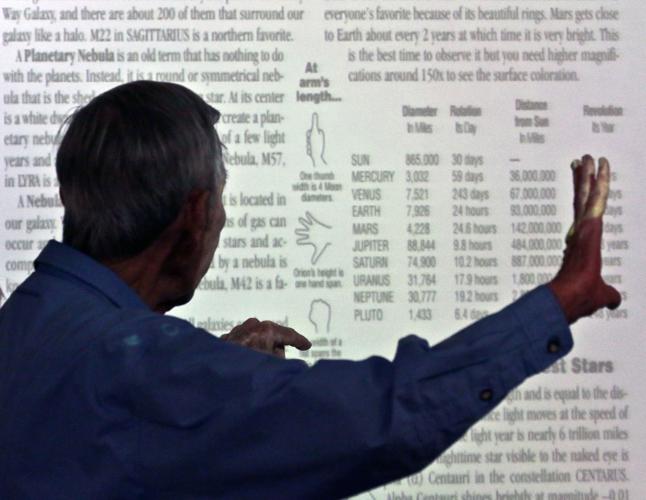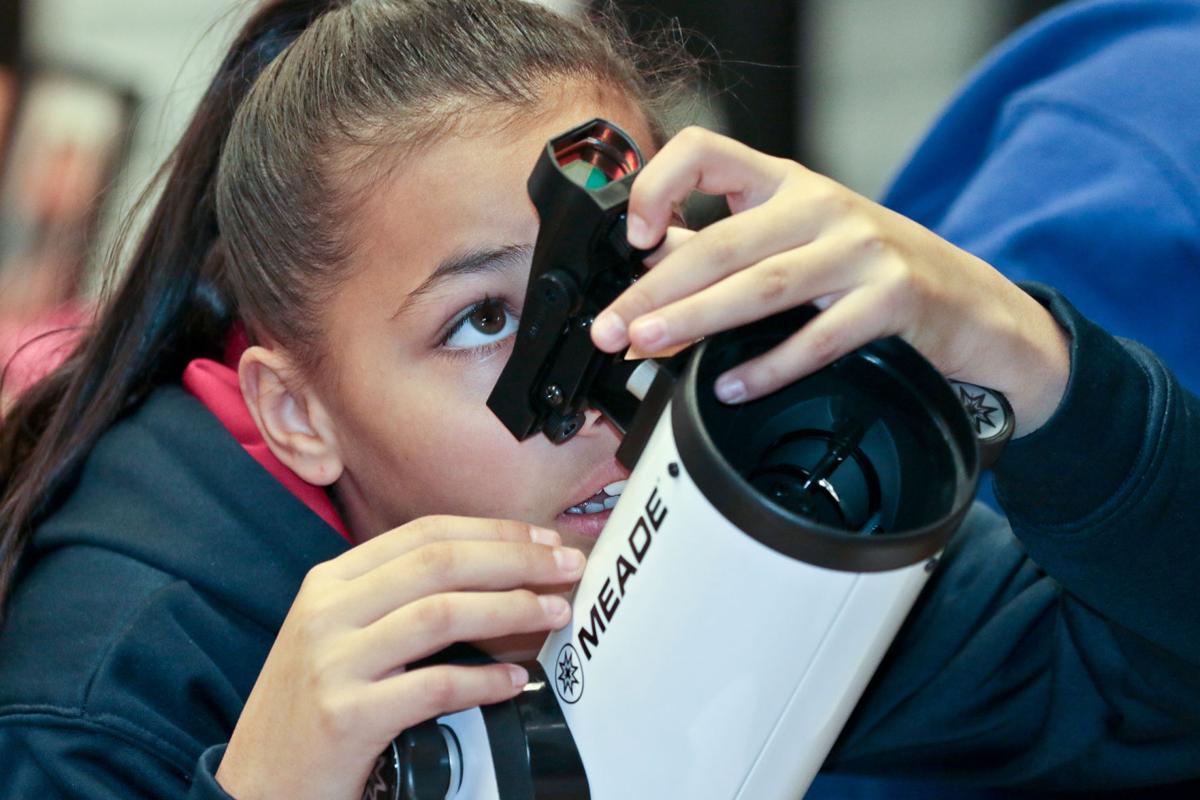Every fifth grade student at Coronado K-8 School received their own tabletop telescope to take and keep from the Sun City Oro Valley Astronomy Club Friday.
"I thought we were gonna learn about the planets," said Nate Vance, 11. "I didn't know we were gonna get these."
Students spent the two days prior learning about space, creating Play-Dough planets and participating in a demonstration to show the distance between planets, led by volunteers with the astronomy club.
But, Friday was "telescope day," said Harland Goertz, volunteer.

Club members Harland Goertz, left, and Bob Cratty help fifth-grader Nate Vance open one of the telescopes.
Telescopes have been given to Coronodo fifth graders for nine years as part of Project Astro, sponsored by the University of Arizona's National Optical Astronomy Observatory (NOAO) to connect teachers with astronomers.
In 2009, the the astronomy club began raising money through member donations and have since handed out almost 800 telescopes.
The project also provides scholarships for some of Coronado's seventh graders to go to astronomy camp in the summer on Kitt Peak.
"We were trying to find a hook to get them (students) interested in science and technology and astronomy is a way to do that," said Bob Cratty, astronomy club member. "They get really excited about it. In the past we've had some that said this is what they really want to get into."
"Fifth grade is the ideal age to plant the seed in kids," Goertz added. "This philosophy has expanded into STEM (science, technology, engineering, mathematics) schools...This is in addition to the Arizona requirement for astronomy in the seventh grade curriculum."
As astronomy club members handed out telescopes to the 26 students in Katie Bruce's class, oohs and ahs were heard all around.
"Oh this is nice," exclaimed one student as she opened the box.
"Don't ever look at the sun with this," Cratty instructs, as he showed the class how to point the telescope and install the finder scope on top.

Bob Cratty, from the Sun City Oro Valley (SCOV) Astronomy Club, talks about planet sizes at Coronado K-8 School in Catalina, AZ. on December 8, 2017.
Students follow instructions and look through the scope.
Cratty takes the lenses out of the box and talks about what they're used for.
"One says 9 and one says 26," Cratty said. "Those are focal lengths. If you take the 26 lens you could see Saturn and the moons. If you take the 9 lens it gets you a closer look, but not as much area. This one will double your view. It will magnify it by two times."
The class practice focusing the telescopes on posters around the room.
"I'm really excited," said Aniah Dietz, 11. "I'm gonna look at the moon."
Olivia Hall, 10, said she's happy about getting her own telescope and wants to do something in astronomy when she grows up, but isn't sure what yet.
At the end of class, Bob Weirather, an astronomy club volunteer gave the students some advice about being space explorers and having careers in astronomy.
"As you grow up, take your science classes and your math classes," Weirather said. "You can make things happen. You will make things happen."







